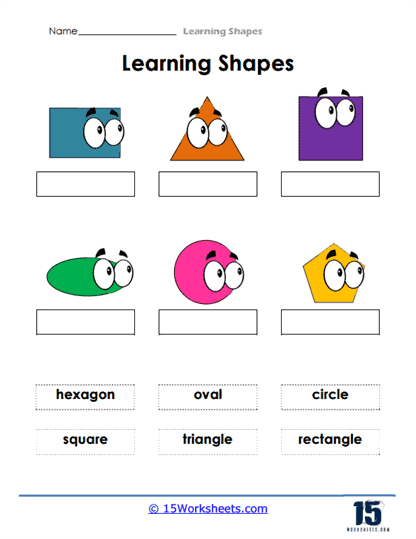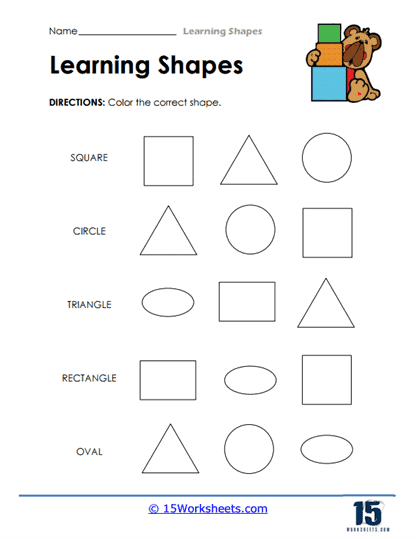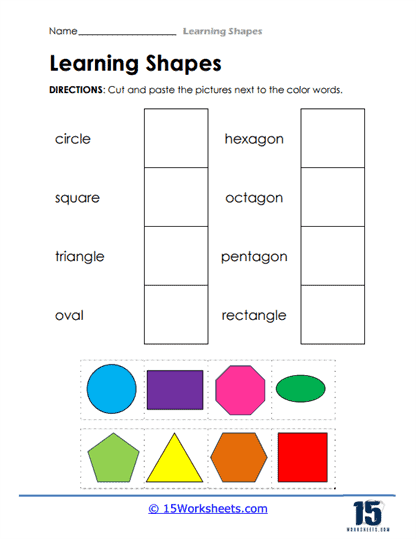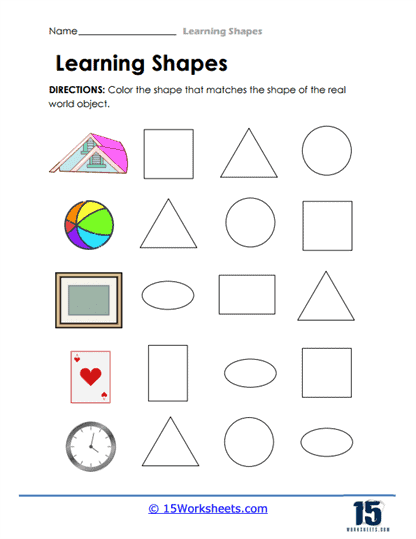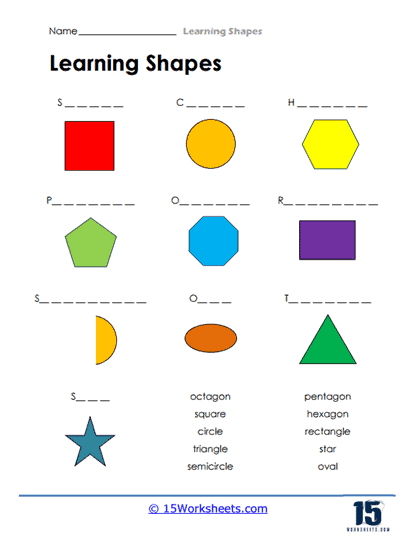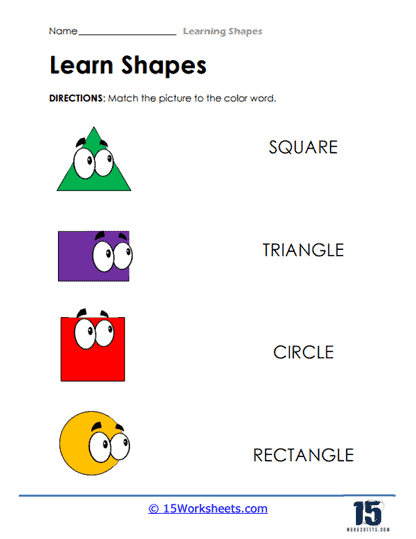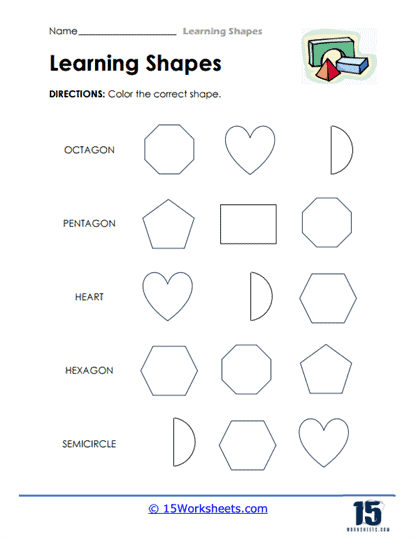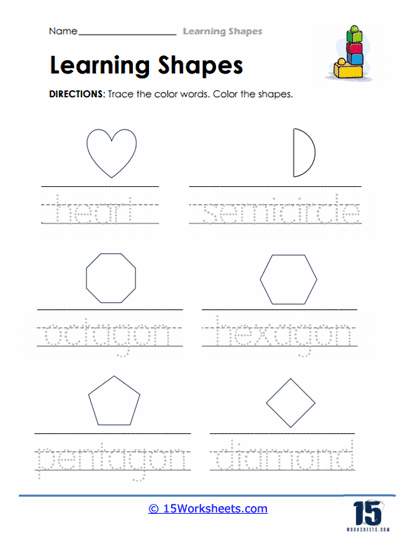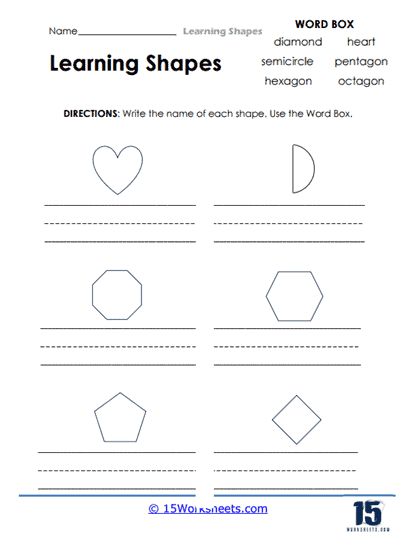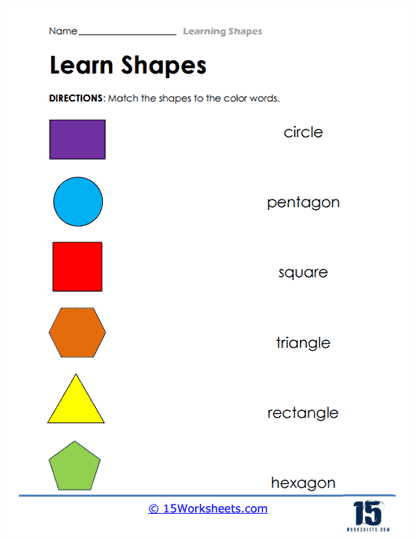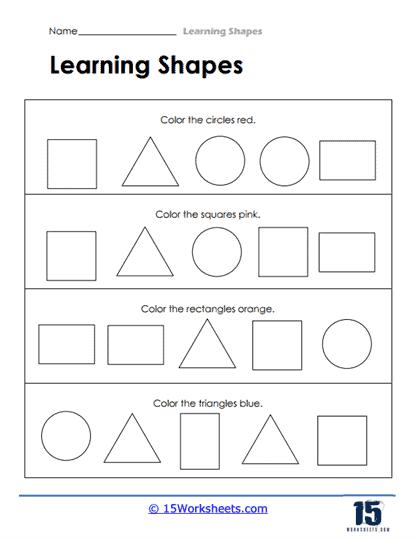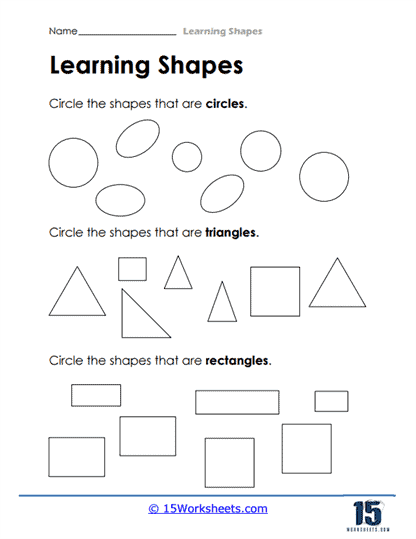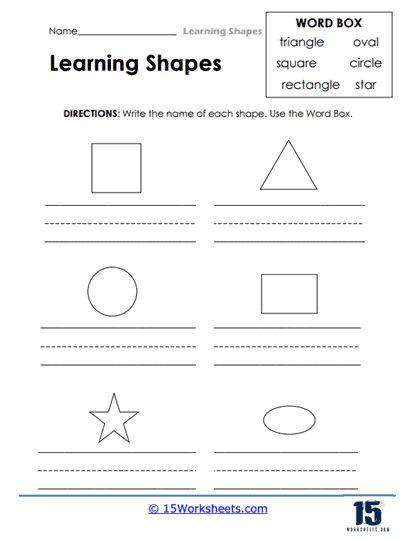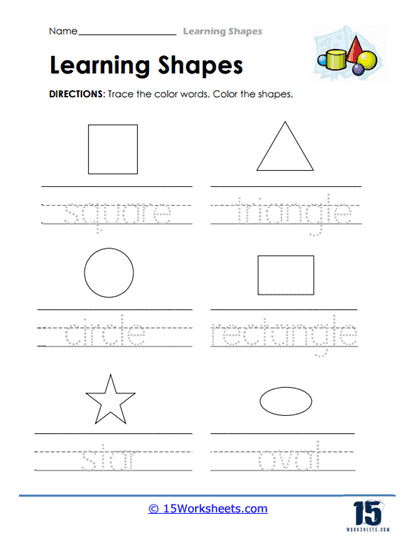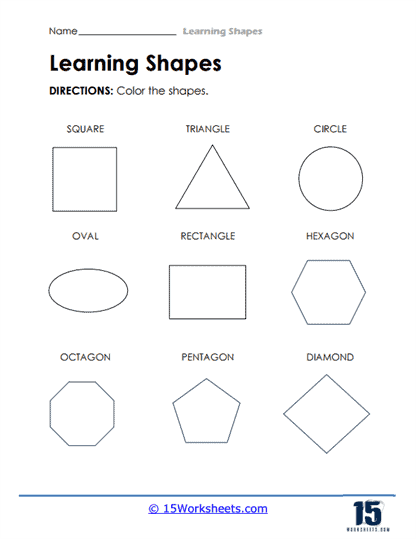Learning Shapes Worksheets
About These 15 Worksheets
Just like their name suggests, they are worksheets that help us learn about shapes and basic geometry. You know how in a comic book you have different panels with illustrations and text? Well, these worksheets are kind of like that but instead of superheroes, there are different shapes like circles, squares, triangles, and many more. And instead of battles against villains, there are fun and challenging exercises to solve.
Now, you might be wondering, “Why do we need to learn shapes?” Well, have you ever thought about how the world around us is filled with shapes? The TV is a rectangle, the clock on your wall is a circle, the slices of your pizza are triangles! By understanding shapes, we start to understand the world better. For preschool students, recognizing shapes is their first step in learning to recognize letters and numbers, which also have their own shapes.
You might be thinking, “What do shapes have to do with reading and writing?” Well, think about this – When you write a letter ‘A’, it’s made up of two slanted lines meeting at a point, and a horizontal line across – just like a triangle with a line inside! So, when you understand shapes, it can help you to write letters and numbers better.
There are many different types of exercises you might find over the course of this worksheet series. Here are some examples:
Coloring and Tracing – In this type of exercise, you will be asked to color in different shapes. This helps you recognize and remember the names of shapes. Here, you’ll also find faint lines in the shape of a square, a circle, or other shapes, and your job is to trace over these lines. This is a great way to practice drawing shapes.
Matching and Identification – In these exercises, you’ll see pairs of shapes and you have to match the same ones together. It’s like playing a memory game! You’ll also see a mix of different shapes and you have to identify a specific one. For example, you might have to circle all the triangles in a group of different shapes.
Drawing and Counting – Once you’ve had practice tracing, you might be asked to draw shapes on your own. This can be a fun way to test your knowledge. You will also need to count the number of a specific shape on the page. This is a great way to practice your counting skills as well as shape recognition.
Cut and Paste – In these crafty exercises, you’ll cut out shapes and paste them into a specific place on the worksheet. This helps with your fine motor skills and shape identification.
Learning about shapes is incredibly important for preschool students because it lays the groundwork for many key aspects of their educational growth. Here’s why:
Introduction to Geometry – Understanding shapes is the first step into the world of geometry. Learning to identify different shapes introduces kids to concepts like lines, points, and angles.
Pre-reading Skills – Recognizing shapes helps in recognizing letters. After all, letters are composed of shapes! For instance, ‘O’ is a circle, ‘A’ is like a triangle, and ‘S’ is like a curved line. Understanding shapes, therefore, is a pre-reading skill.
Problem Solving and Fine Motor Skills – Many shapes puzzles and activities require children to recognize and fit different shapes together, helping develop problem-solving skills. Activities like drawing or cutting out shapes help children develop their fine motor skills and hand-eye coordination. When children learn to categorize shapes, they are learning to observe, compare, and analyze their surroundings. This helps to develop their critical thinking skills.
Math Concepts – Beyond geometry, learning about shapes also helps children with other mathematical concepts. For example, understanding that a square is a special type of rectangle where all sides are equal can lay the groundwork for understanding more advanced concepts like ratios and proportions.
Spatial Understanding – Understanding shapes aids spatial awareness – how objects relate to each other in space. It helps them understand concepts like above and below, inside and outside, etc.

